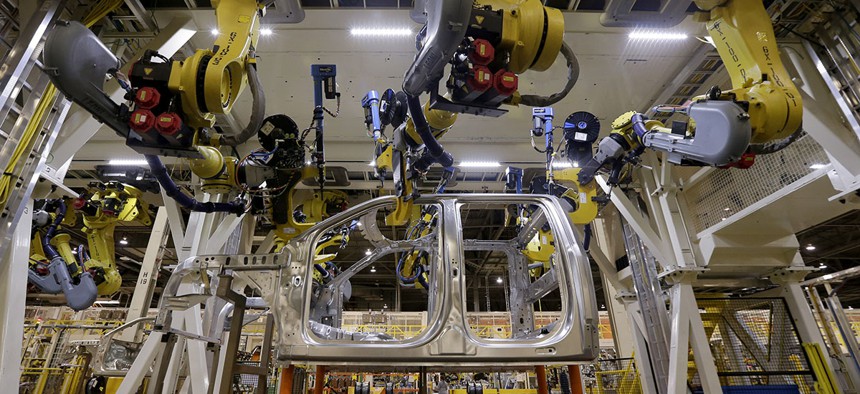We Can Now Work Next to Our Robot Colleagues Without Getting Mauled to Death, Thanks to an Airbag

Robots fasten parts on a new 2015 aluminum-alloy body Ford F-150 truck in the body shop at the company's Kansas City Assembly Plant in Claycomo, Mo. Charlie Riedel/AP
German researchers at the DLR Robotics and Mechatronics Center are working to create a safer workplace for both man and robot.
German researchers at the DLR Robotics and Mechatronics Center are working to create a safer workplace for both man and robot. One solution they’ve come up with: airbags for robots.
An inflatable cushion surrounds a heavy or sharp tool (like a claw or a gripper) on a robotic arm; when there’s a human working nearby, he or she can inflate the cushion. That way, if the robot collides into a person, it feels like a slap in the face with a pillow—not like getting hit by a frying pan.
According to industry safety standards, the maximum speed for a robot with a mounted tool is 1 meter per second. Even at that speed, the hard metal body of a robotic arm, let alone the pointy edge of a tool, could be injurious. But with an airbag the robot is “intrinsically safe” at all times, according to the DLR Robotics team.


